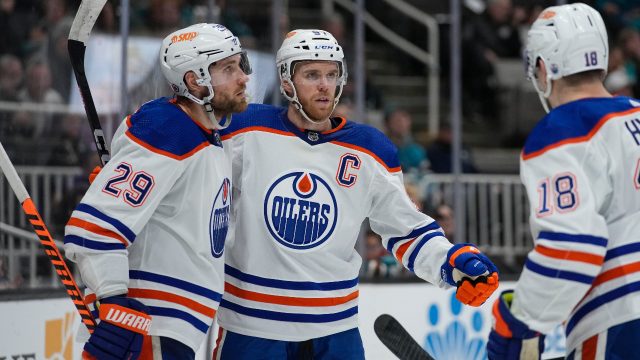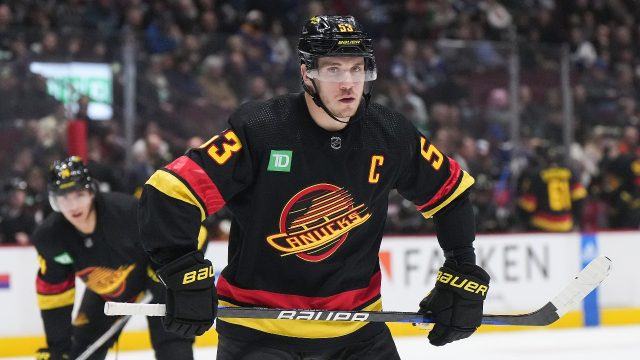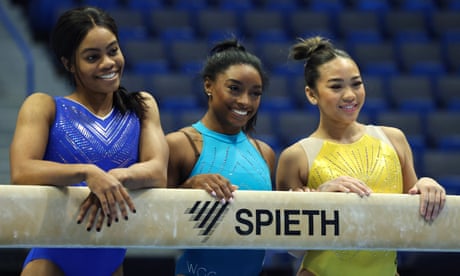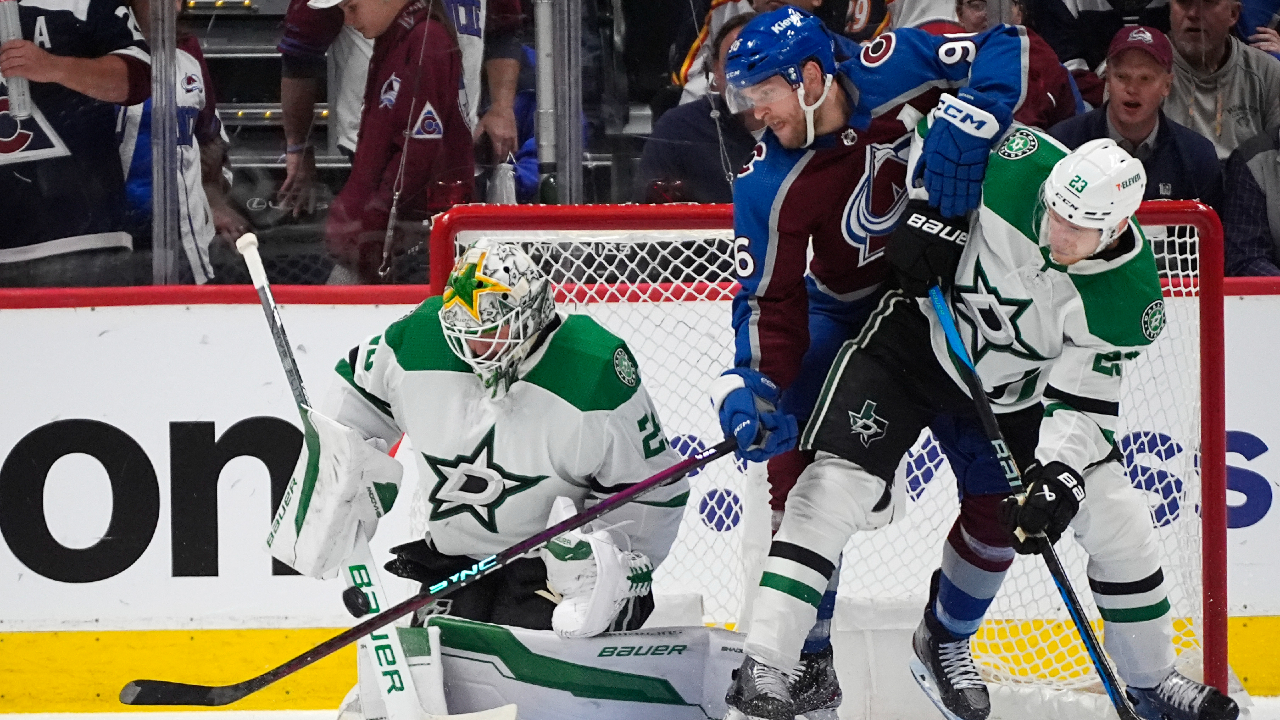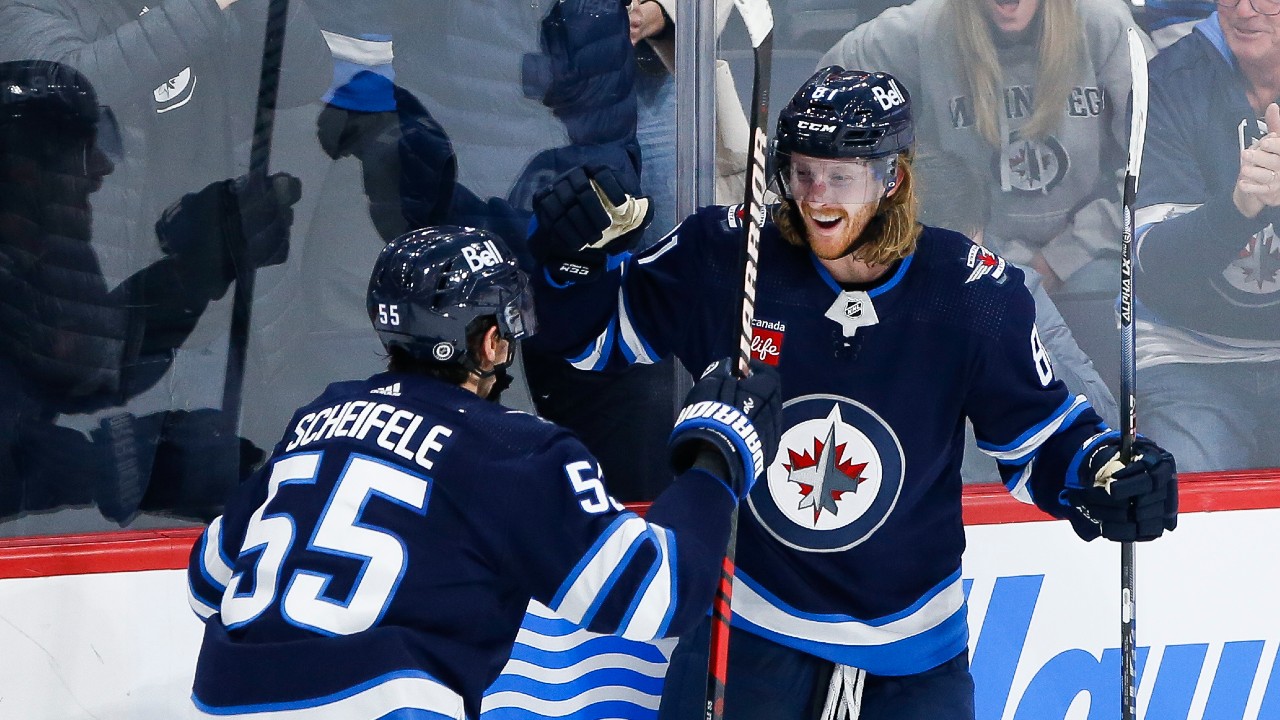
Another week closer to the 2023 NHL trade deadline and teams are starting to get more aggressive with their scouting coverage. Contending clubs who are tight to the salary cap are looking for a diamond in the rough – or investigating the cost associated with obtaining a high-end player – and how to facilitate a trade.
The Jets are in a great position in relation to the salary cap. They project to have over $9 million of cap space available to them come March 3.
Winnipeg has been playing below their standard recently, but overall have had a great season to date and they have an opportunity to add to the group without subtracting from their NHL roster.
As I continue my deep dive into Canadian NHL franchises, it’s time to take a look at where the Winnipeg Jets are organizationally.
ROSTER AND SALARY CAP
Note: Morrissey becomes a UFA following the 2027-28 season and has a full no-move clause through 2024-25. He then has a modified no-move (15 team) for the duration of his contract.
NHL FORWARDS
Kyle Connor: The Jets’ leading scorer is having a fantastic season. He’s historically been more of a shooter than a playmaker, but things have flipped, to a degree, this season. For the first time in his career Connor has more assists than goals scored. It’s a nice element to add, especially when considering opponents key in on Connor to try to take away space, and not allow him to get pucks on goal. Connor skates over 20 minutes per game and the bulk of those minutes come at even strength and on the primary power-play unit. Connor rarely kills penalties. He flat out generates offence. He’s the Jets’ most lethal forward.
Mark Scheifele: Scheifele has rebounded nicely this season after a very uneven year in 2021-22. He’s already surpassed his goal scoring from last year, and more importantly his three-zone detail (and off the puck effort) has improved greatly. He’s much more involved and engaged this season. Scheifele averages over 20 minutesof ice time and, like Connor, the bulk of his minutes come at even strength and the first power-play unit. He very rarely kills penalties. Scheifele has, historically, not been elite in the face-off circle, so it’s an area that could improve. He has a faceoff winning percentage of 47 this season. Teams want to start with the puck in all three zones – it would be nice to see more face-off wins in the second half for Scheifele.
Pierre-Luc Dubois: There is a trend developing with my analysis of Jets players – and Dubois fits the theme. The power-forward is having a solid season offensively and he’s giving opponents all they can handle in the hard areas. Players like Dubois are a rare breed – power forwards who score and spend around 100 minutes in the penalty box. He’s on track to have his most productive season as a Jet. Dubois skates at even strength and the power-play and has seen a small spike in his average TOI recently – trending closer to 20 minutes per game. Like Scheifele, Dubois has room to improve in the face-off circle, where his win/loss percentage is 49.
The elephant in the room is Dubois’ contract. He’s an RFA, again, after this year and has not indicated any urgency to sign a long-term deal with the Jets. At some point a decision will have to be made on how to proceed. His qualifying offer this summer is set at $6 million.
Blake Wheeler: The 6-foot-5, 226-pound veteran forward was tested early when Jets coach Rick Bowness elected to remove the captain’s “C” from his jersey. Wheeler could have easily sulked, and allowed the decision to impact his mental state to the point he played poorly. He’s generally reacted the exact opposite. There’s one more year left on Wheeler’s contract after this season at a cap hit of $8.25M. Over his last 10-game segment, Wheeler has averaged just shy of 17 minutes of ice time. He, too, is used at even strength and the power-play. He’s averaging just shy of a point per game and his pace remains good enough for the speed of the NHL. If the Jets are going to have playoff success, they will rely on players like Wheeler to go to another level still.
Adam Lowry: In my opinion Lowry is a perfect third line player for the Jets. He can move into a top six role in a pinch, but playing in the three hole as a big body centreman is very important to the team’s success. Lowry plays with sound pace, he leads the Jets forwards with 119 hits, and he’s on pace for his most productive season offensively. Lowry averages just over 15 minutes of ice time per game and he’s used in all situations. He stations himself net front on the second power-play unit and rotates into shooting lanes on the penalty kill, making it difficult for opponents to move pucks around his frame and long reach. Lowry is another Jets forward who has room for improvement in the face-off circle. He averages winning right around 50 per cent of his draws.
Nikolaj Ehlers: Ehlers is rounding into form after suffering through injury. He’s playing quick and fast, giving opponents all they can handle off the rush in the process. Ehlers is a play driver who has directed 68 shots on goal in his last 10-game segment. During that time he has been deployed at even strength and the power-play, averaging 17 minutes of ice time. The real test for Ehlers will come in the second half of the season and playoffs. He doesn’t, historically, have great playoff stats (31GP, 4G, 8A, -5). The Jets will need more out of Ehlers during the hardest time of the season if they are hoping to go on a sustained run in playoffs.
Cole Perfetti: Perfetti is showing growth and playing to his identity offensively. The Jets have been using him in an elevated role. His most recent five-game segment has seen a marginal rise in his average ice time (15:32) and he’s being deployed at even strength and the power play. There is no doubt about Perfetti’s offensive element. It’s what makes him a dangerous player. Having said that, I would like to see him get more pucks to the net. Too many of his shots are being blocked or missing the net entirely. It’s a big ask for a young player to be used in the role Perfetti finds himself. He will be up for the role in time, but the Jets would be wise to add to their middle six and spread out his responsibilities.
DEPTH FORWARDS
Teams would always like to get more scoring out of their bottom forward lines, but it’s rarely a reality. The Jets have an interesting mix of bottom six forwards. Sam Gagner is leading that group with right goals and six assists and Morgan Barron has also chipped in offensively (5G, 6A).
Gagner is the kind of player who can slide into a variety of roles for the Jets and he still has enough skill to be used on the second power-play unit if required.
Mason Appleton has missed time with injury, but is close to returning. He adds another big body forward to the group and eats around 16 minutes of ice time per game. He chips in with some secondary scoring and kills penalties for the Jets.
What stands out to me is the mix of size the Jets have in the bottom of their lineup. Barron (6-foot-4, 220 pounds), Kevin Stenlund (6-foot-4, 209 pounds) and Saku Maenalanen (6-foot-4, 207 pounds) add both girth and bump to the lineup. Playoffs involve trying to wear down your opponent over the course of a seven-game series and these players could prove valuable in the role.
Karson Kuhlman is another depth forward who brings a speed element. He’s quick to space and can be effective in an energy role.
Note: Barron, Stenlund, and Maenalanen are also contributing on the Jets’ penalty kill, which is ranked third in the NHL with a success rate of just under 84 per cent.
NHL DEFENCEMEN
Josh Morrissey: Morrissey has been one of the top defencemen in the entire NHL this season. He’s third in defencemen scoring and averages over 23 minutes per game time on ice. His primary minutes come at even strength and the power play, and he’s scored one goal and 21 assists on the man advantage. He is a proficient distributor who makes sound decisions in the offensive zone. Players who sleep on Morrissey when they’re transitioning pucks pay the price physically. He’s always had a sneaky approach gapping up and finishing his checks. Morrissey is arguably the Jets MVP this season and in the conversation for the Norris Trophy.
Neal Pionk: Pionk logs a ton of ice for the Jets in all situations, averaging 22 minutes per game. Pionk has a wide-ranging skill set. He’s not real big (6-foot, 186 pounds) but he does have some bump to his game physically at times. On the penalty kill he relies on his small area quickness to disrupt opponents and jump to loose pucks. When he is used on the second power-play unit he is a sound distributor who can also accurately direct pucks on goal from range. Pionk provides a second layer of offence for the Jets. There are times he does get a bit hectic in his zone and ends up losing leverage – or his angle – on opponents. I appreciate his consistent compete, though. He shows up every night. When you see defenders skating north of 22 minutes per game they are bound to make some mistakes at times. Pionk isn’t a true top pairing “D” for me, but he’s playing the role to the best of his ability in Winnipeg.
Dylan DeMelo: DeMelo is a steady contributor for the Jets. He averages nearly 20 minutes of ice time per game and the bulk of those come at even strength and the penalty kill. He’s a coveted right shot “D” and his contract makes sense for both the player and the team ($3M AAV through next season).
Brenden Dillon: Dillon plays a prominent role on the Jets penalty kill and averages just over 19 minutes of ice time. His contract is affordable ($3.9M) in relation to his role. The 6-foot-4, 220-pound defender gets in the shooting lanes effectively on the PK and has an active stick. He’s not shy about gapping up physically and makes responsible decisions with the puck. Dillon is generally a low risk “D” who keeps things simple. His skating is average plus. At this stage of his career, the 32-year-old does have some nights where he looks a bit off with the speed of the game, but he adjusts and it’s not a concern for the Jets this season.
Nate Schmidt: Schmidt has had a nice bounce back season after an uneven campaign in 2021-22. After struggling to make puck plays and defend consistently, Schmidt is being used in all situations this season and his execution has been reliable. Schmidt moves well, he’s a solid team guy, and can be used up in the lineup if required. I’m not in love with his contract ($5.95M AAV through 2024-25) in relation to his production offensively, but the Jets have cap space and it doesn’t hold the group back from acquiring more assets. His contract is armed with a modified no trade clause (10 teams).
Dylan Samberg: Samberg is on the rise for me and I’ve always had time for the way he manages the game. He has good size (6-foot-3, 190 pounds), moves well, makes a good first pass, and chips in with some depth offence. I like the look of the Jets lineup when he suits up. Samberg is skating just under 16 minutes per game and is being deployed at even strength and the penalty kill. As he evolves, it opens up options for the Jets to possibly move one of their defensive assets in a trade scenario to upgrade another slot in their lineup.
Logan Stanley: Stanley has missed significant time with injury this season. When he does play he is being deployed in a mostly depth role and averages around 13 minutes of ice time, with penalty killing usage. Stanley is a huge defenceman (6-foot-7, 227 pounds) who plays a mostly shutdown game. His small area quickness – defending from his crease/corner/back to crease – can be exposed at times versus fast opponents. Stanley’s only 24 years old and still has a chance to evolve into a more consistent shutdown defenceman, but I do feel this slot is ripe for an upgrade in the Jets lineup.
IN OR OUT?
Ville Heinola was selected by the Jets in the first round of the 2019 draft (20th). He’s having a solid year at the AHL level with the Manitoba Moose (16GP, 1G, 12A, +16), but his cameo appearances at the NHL level have been a bit uneven (10GP, 0G, 1A, -5).
Heinola is definitely stronger and more explosive than he has been in the past, but he’s never going to be a heavy player. The two-way/transitional defender is a candidate to someday QB one of the Jets’ power-play units. In fact, he has shown he is capable of the role at times this season. He’s more of a distributor than a shooter.
Does his defending lack detail at times? Yes, but not due to a lack of hockey intelligence. Heinola needs time to adjust to the finer details of the NHL game. His timing – off the puck joining the rush and anticipating where the play is going – has been marginally off when playing NHL minutes. I’m anticipating his defending will improve, in time, like it has at the AHL level.
Heinola is only 21 years young. Teams will be asking the Jets what their plans are for him moving forward.
NHL GOALTENDING
Connor Hellebuyck: Am I the only person who thinks Helleybuck looks even bigger in his net than his listed size suggests (6-foot-4, 207 pounds)?
There’s no need to overthink things with Hellebuyck. He’s tied for second in NHL save percentage (.923) and fourth in goals-against average (2.46).
The Jets, at time of writing this piece, are seventh overall in league standings. Hellebuyck faces, on average, 32 shots per game and the starting goalies ahead of the Jets in standings average just under 29 shots against per game. It doesn’t sound like an important stat until you multiply it by 60 starts and realize Hellebuyck is being asked to stop 180 more shots over the course of the year. It matters!
David Rittich: Rittich is on a one-year contract (900K) and he’s done everything the Jets could have expected from a back up goalie. He’s 8-4 with a .90 save percentage and 2.58 GAA.
PROSPECTS UPDATE
Since being sent to the WHL’s Portland Winterhawks, Chaz Lucius is on a heater as they say (6GP, 5G, 10A, 15PTS). I had a chance to view him this past weekend in Seattle and he looked like a man amongst boys at times. His fitness and strength is above the major junior level right now. Portland is one of the top teams in the WHL and Lucius will benefit from a potential playoff run with the Winterhawks.
Rutger McGroarty scored a goal and six assists for Team USA at the world juniors in Halifax and Moncton. Since returning to NCAA Michigan, though, he has only one goal and two assists in six games. Overall, however, McGroarty has had a solid freshman season (10G, 12A). He will have to continue to work on his open ice pace. He’s not slow, but there is no doubt an extra gear will help him in the long run. I appreciate McGroarty can play a heavy interior game.
DRAFT CAPITAL
The Jets aren’t flush with picks at the top of the 2023 draft, but hold all of their picks in 2024 and 2025.
Teams have been interested in acquiring picks further out than the current year a little more aggressively in the cap era. It will be interesting to see how Winnipeg values its current roster, what the potential trade scenarios are to upgrade their team, and what they are willing to spend in the coming weeks.
NEEDS
Teams never seem to have enough defencemen in the playoffs. The marathon that is the Stanley Cup Playoffs always results in injuries to key players. I believe the Jets would be wise to look for more security on the back end, even if it’s a depth addition.
The other area of concern is the fact Winnipeg struggles to win key face-offs in all three zones. The top three centremen have a win-loss percentage bordering on 50. Teams run set plays in all three zones that don’t materialize to much if they don’t start with the puck off face-off wins. The Jets could use another centre, even if it means moving Lowry to the wing in the process (for example).
HYPOTHETICAL TRADES
I recognize the Jets likely have an internal budget, but I also know they would prefer to acquire players with term (if possible). It gives them roster and cost certainty.
Nothing is perfect, however, and there is always a cost when trying to upgrade your team for a playoff run.
Here are some hypothetical suggestions:
WINNIPEG TRADES: Ville Heinola, Brad Lambert, 2023 first-rounder, 2024 third-rounder
ARIZONA TRADES: Jakob Chychrun, Nick Bjugstad, 2024 sixth-round pick
Note: No salary retention required.
WINNIPEG TRADES: 2023 third-rounder, 2024 third-rounder
CHICAGO TRADES: Jonathan Toews, retains 50 per cent of his cap
Note: Winnipeg is one of the few teams in the league that can facilitate this trade without involving a third team, provided Chicago retains 50 per cent of Toews’ contract. I believe the asking price is more like a second-round pick in 2024, but I would offer the third to begin with. But if a second was required to get the deal done, I’d do it.
WINNIPEG TRADES: 2023 third-round pick
ST. LOUIS TRADES: Noel Acciari
Note: On the surface this looks like an overpayment for the Jets, but consider Acciari is on pace for over 15 goals and his face-off winning percentage is close to 55. He also leads the Blues in shot blocks (55) and hits (158). Acciari is affordable ($1.25M) and he’s on an expiring contract.
O’REILLY, YOU ASK?
I’m torn about the potential to add Ryan O’Reilly and the cost associated with the acquisition.
O’Reilly is coming off a broken foot and was having a down year overall before the injury. Having said that he has scored 10 goals and wins around 55 per cent of his face-offs. He also a proven leader (like Toews).
The cost I’m hearing is a first-round pick and top prospect to acquire O’Reilly. That’s too expensive in my opinion. The Jets could make a couple subtle deals that will add up to close to the same impact – and cost less.
PERSONAL OPINIONS
If not for the job Jim Montgomery has done in Boston, Rick Bowness would be one of the favourites for coach of the year.
I feel like the Western Conference is wide open compared to the East, and the Jets have a real chance for some playoff success this season.
It would be fun to see the Jets take some risk(s) this deadline and make some aggressive moves that could result in a deep run – and goodwill amongst their fans.


